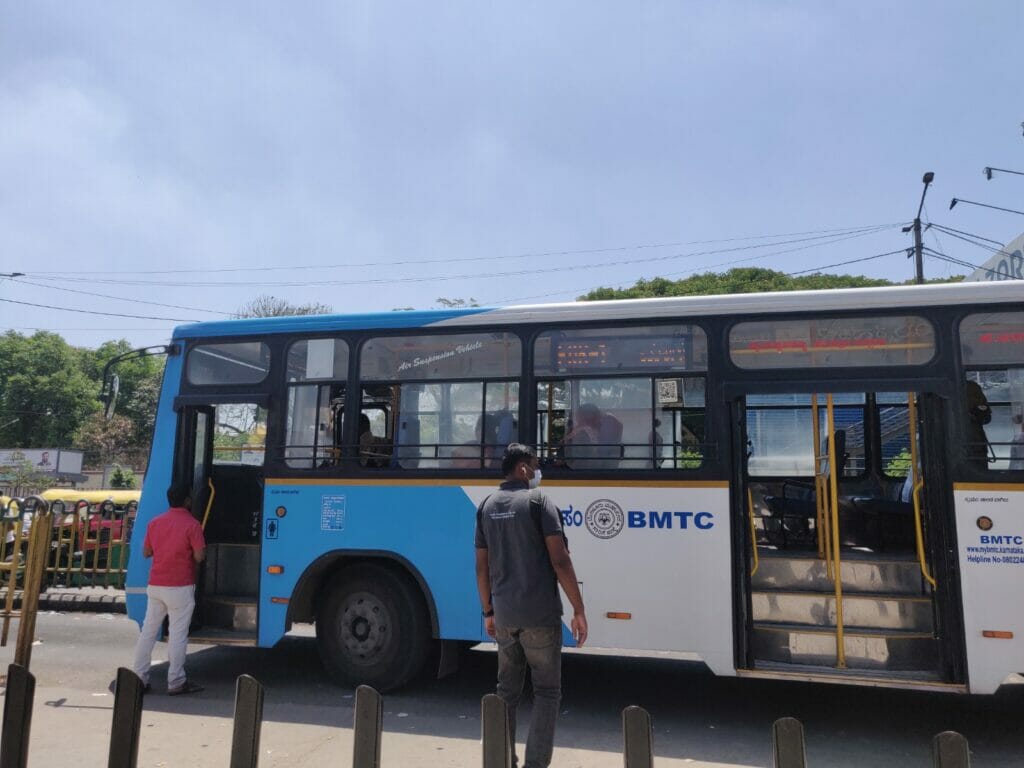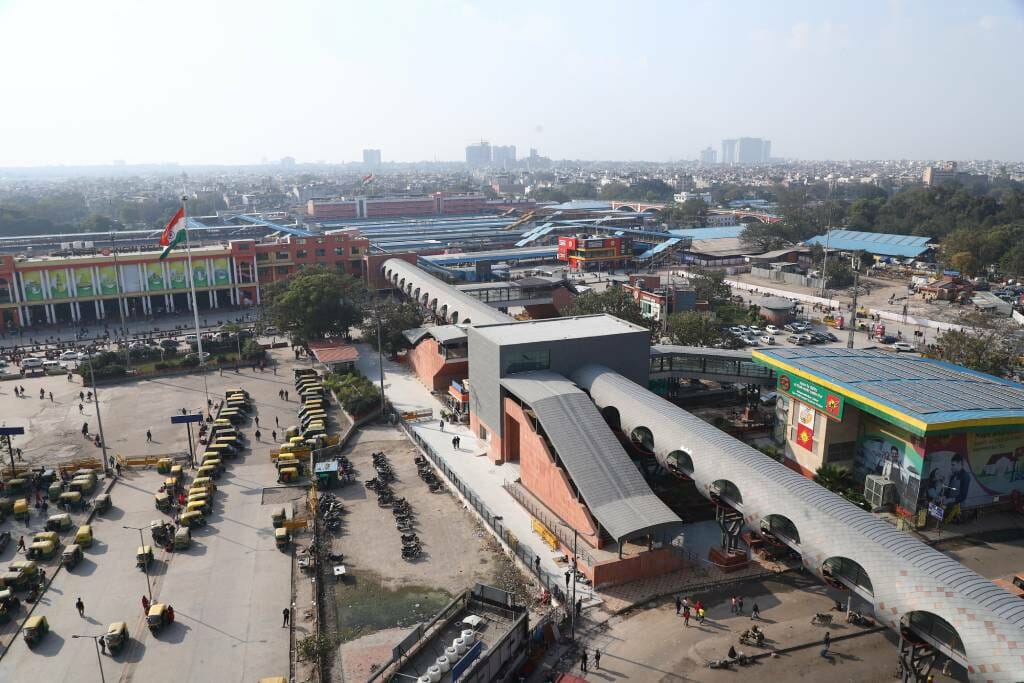After much fanfare Bengaluru’s new Whitefield (Kadugodi) and Krishnarajapura (KR Puram) metro line, which finally put Whitefield on the Namma Metro grid, was inaugurated by Prime Minister Narendra Modi on March 25th, and opened to the public on March 26th.
Despite being made fun of by netizens for the line missing between Baiyappanahalli and Krishnarajapuram, which is currently bridged by the Bengaluru Metropolitan Transport Corporation’s (BMTC) feeder buses, the Whitefield metro line logged a ridership of 16,319 on the first day of operations.
The line, which is proposed to connect Baiyappanahalli and Whitefield through Krishnarajapuram (KR Puram), is essentially an extension of the purple line that starts off from Kengeri. The opening of this metro line also raised Bengaluru’s ranking among the Indian cities with the largest metro network: 69.66 km across 63 stations), second only to Delhi metro’s 390.14 km (286 stations).
Infrastructure and operations
In an interview, in December 2022, Bangalore Metro Rail Corporation Limited (BMRCL) MD Anjum Parvez mentioned that while trains can run from KR Puram in March 2023, the corporation would require an additional two to three months to bridge the gap between Kyappanahalli and KR Puram– the progress of which was thwarted by incessant rains and steel shortage for “the (web) girder at the railway crossing near KR Puram.”
“In all the Namma Metro Phase 2 lines, all the entry and exit points to the metro stations will be from the service roads, not from the main carriageway, primarily for the safety of the passengers,” he says, adding that the service roads will act as BMTC and auto pick up and drop areas.

The gap between the two primary stations is currently being bridged by seven prompt MF-FDR buses that are easily available at the gates of the KR Puram and Baiyappanahalli stations (on Old Madras road). While travelling between 11 am and 1 pm, I found buses stationed right outside the gates with additional BMRCL and BMTC personnel deployed at entry and exit points, guiding eager passengers to and from the feeder buses. I boarded the easily available bus, and at Rs 10 and within ten minutes, I reached the newly opened KR Puram station via Tin Factory.
The missing metro link has already been reported as a major concern for passengers who test-rode the newly opened KR Puram to Whitefield stretch, even as they vouched for their travel times to be halved now that the metro was here.
“For a mass transit system like a metro, every station needs a dedicated bus, cab or auto space that will facilitate last-mile connectivity. Except for a few stations like Nayanadahalli and Swami Vivekananda station, this hasn’t been implemented,” says urban commute expert and the founder-member of Praja, Sanjeev Dyamannavar. He adds that a mass transit system’s purpose is to de-congest the road and create less interference for vehicular movement. “Here, the road traffic is obstructed with people getting on and off the road near the stations.”
Read more: What Bengaluru’s flight users got in 5 years, rail users await for 10 years
Opinions about the new line
Soyna. R, a resident of Attiguppe who works in a private company in Whitefield, is elated with the new line as it has reduced her travel time. “I used to take the purple line train from Attiguppe to Baiyappanahalli, and take a direct bus to my work from there,” she says, adding that taking the metro feeder (MF-FDR) buses from Baiyappanahalli to KR Puram has not deterred her enthusiasm in the slightest. It has, however, increased her daily commute fare by Rs 40 for both ways, which she is okay with.

The new route also saw BMRCL officials in uniform and protective headgear carrying out checks across the platforms. Flanked on either side by the BMRCL officials, a contractor was explaining what the tile gaps post-construction of the platform were and how they were planning on filling them soon.
When asked about the probability of increasing parking in Baiyappanahalli station, Yashwant Chavan, BMRCL Public Relations Officer, says: “Currently, Baiyappanahalli is the terminal station. Once the connection is complete, Whitefield (Kadugodi) will become the terminal station.” While people are arriving at the station to park their vehicles, he expects this demand to shift to the Whitefield station. There are also parking spaces on either side of the Baiyappanahalli station now, which as per Chavan, will suffice.
As the issue plagues the rest of the metro rail’s operations, the lack of adequate first and last-mile connectivity through buses and missing integration of inter-modal transportation are also evident in the newly opened metro line as well.
Multi-modal connectivity
“It is crucial to connect the new terminal to the Baiyappanahalli Metro station with a foot-over-bridge, to ensure Metro connectivity is provided,” says Sanjeev, while critiquing the new Sir M Visveswaraya railway terminal at Baiyappanahalli.
When asked about integrating different modes of transportation, specifically the KR Puram Railway station, Yashwant said there is a plan in the works to construct a foot-over bridge (FOB) linking the two transit nodes.

Sanjeev flags a few discrepancies in this regard. There is yet to be a connection between the Banashanakari metro station and its Traffic and Transit Management Center (TTMC). Additionally in Baiyyapanhalli, they haven’t integrated the BBMP’s foot-over bridge and the one at the metro station. “The public has to climb up, get down to reach the station and repeat the process. Instead, these could have been connected at the same level to prevent the slowing down of commuters.”
For seamless urban mobility, experts have suggested an integrated multi-modal network where different modes such as public road transport, suburban rail, southwestern rail, and the metro are interconnected. An example of this can be seen in both Yeshwanthpur and Baiyappanahalli metro stations. Both stations are built within close proximity, making it easier for passengers to shift between the two modes.
However, experts mention the missed opportunities when it comes to this integration of transit nodes. “When you consider the Sir M Visvesvaraya terminal, the Baiyyapanahalli terminal or the Swami Vivekananda metro station is nearly two kilometres apart from the railway station,” says Sanjeev. This is of no help for those getting off the railway station and intending to use the metro station for their last leg of commute.
In Delhi, the metro station and the airport are only 500 metres apart. Another example is the Delhi metro’s recent construction of a 242 metre dedicated skywalk that seamlessly connects the Ajmeri Gate side of the New Delhi Railway station and the adjacent New Delhi Metro stations on the Yellow Line and Airport Express Line

Sanjeev adds that BMRCL can benefit from the learnings of the metro systems of Delhi, Nagpur and Mumbai.
RuPay National Common Mobility Card
PM Modi used the first RuPay National Common Mobility Card (NCMC), which will available for the general public from March 30th across all metro stations. This is a prepaid card, which can be used by commuters to pay for different modes of public transport in the city, including the BMTC. The card is also meant to be used for different things, such as paying parking fees, toll booths, fuel fares, including shopping and dining.